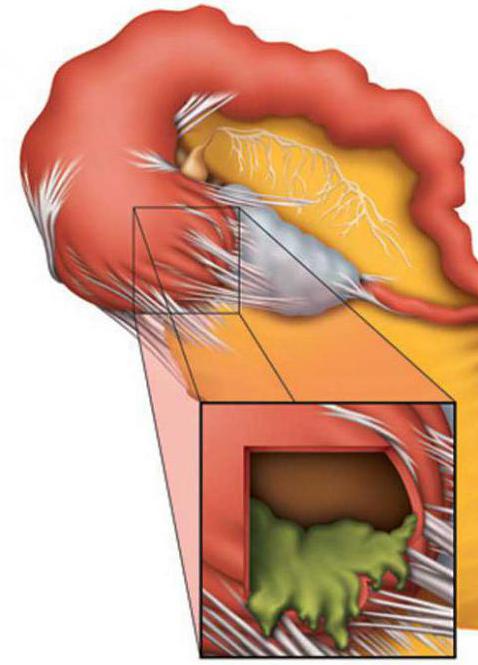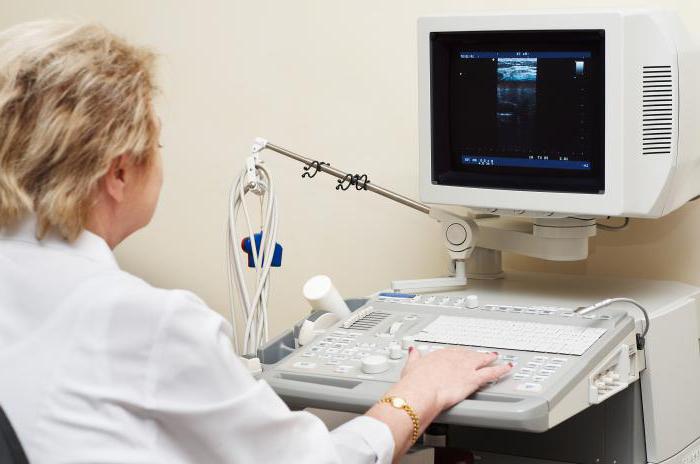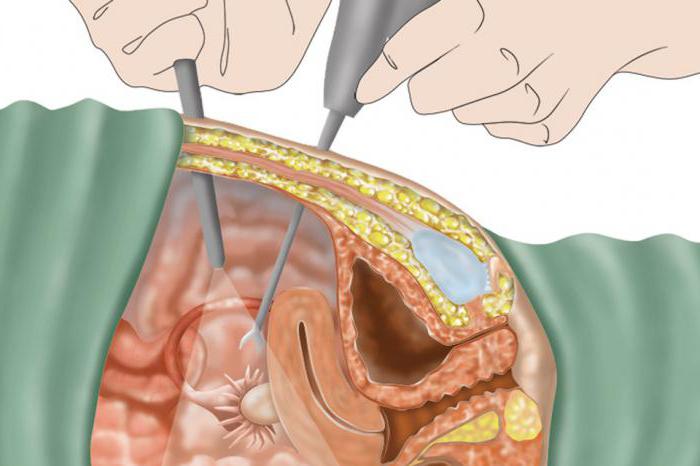One of the serious consequences of inflammation of the appendages is a fallopian tube disease - hydrosalpinx. According to statistics, it is detected in 30% of women of reproductive age. Pathology interferes with the safe conception of the child. However, with adequate treatment, pregnancy is possible. In today's article, we will talk about how to recognize a disease in a timely manner, what methods of its treatment are offered by modern medicine.
Structure and function of the fallopian tubes
To understand the mechanism of the development of the disease and its possible causes, it is necessary to delve into the anatomy. The fallopian or fallopian tube is a paired organ with two lumens. Its length is 10-12 cm. One of the ends of the tube opens into the uterus, and the other ends with villi and leaves near the ovary. Using these holes, the abdominal cavity communicates with the genitals.

The walls of the fallopian tube consist of three layers: external, muscle and internal. The first is represented by the peritoneum and performs a protective function. The muscle layer contributes to the occurrence of contractile movements directed towards the uterine cavity. The inside of the fallopian tube is lined with ciliated epithelium. Its main function is to make wave-like movements, thanks to which a fertilized egg freely enters the uterus. Between the elements of the ciliated epithelium are glandular cells. They are responsible for developing a special secret. This substance supports the viability of sperm, egg and embryo in the initial stages of its development.
What is a hydrosalpinx of the fallopian tubes?
This is a gynecological disease, which over time leads to a violation of the patency of the fallopian tubes. It is characterized by a gradual accumulation of transudate in the lumen of the canals. As a result, the pipe turns into a formation that looks like a pouch. At the initial stage of development, the pathological process practically does not manifest itself. Usually the disease is diagnosed when a woman turns to the gynecologist in the search for causes of infertility.
Doctors distinguish the following forms of hydrosalpinx:
- left-sided;
- right-handed;
- double sided.
The one-sided form of the disease is characterized by the appearance of inflammation on only one tube. At the same time, a woman can become pregnant on her own, but the probability of successful conception is reduced by half. With bilateral hydrosalpinx, both pipes are blocked. You cannot get pregnant with such a diagnosis if you do not consult a doctor in a timely manner. Subsequently, it can form a complete infertility in which the probability of self-carry and give birth to a healthy baby is zero.
Separately, it is necessary to consider the chronic form of pathology. It develops gradually and is not manifested by any deviations. Woman feels good. Hydrosalpinx tubal detected accidentally, when viewed at the gynecologist. Therefore, it is so important to periodically undergo a preventive examination with this doctor.
The mechanism of the development of the disease
Disruption of the fallopian tubes begins against a background of inflammation, for example with salpingitis or salpingo-oophoritis. It occurs abnormal growth of connective tissue, formed multiple adhesions and scarring. Inflammation gradually spreads to all layers of the fallopian tubes.
Villi die ciliated epithelium and muscle layer ceases fully reduced. In the lumen of the tube, commissures grow, violating its patency. In the formed cavity, a secret begins to accumulate. It is produced by the glands of the epithelium in response to existing inflammation. Thus, a disease of the fallopian tubes develops - hydrosalpinx.

Main reasons
The onset of the disease is due to the closure of the middle section of the fallopian tubes. Typically, this problem is a response of the body to the local inflammatory process. Infectious agents penetrate both the ascending and descending paths. In the first case, they mean organs of the reproductive system (cervix, uterus, vagina). The second is about the infusion of infectious agents along with blood flow from the appendix, kidneys, or bladder. Sometimes inflammation is aseptic nature when it is preceded by the development of various gynecological diseases.
Doctors distinguish the following causes of hydrosalpinx of the fallopian tubes:
- frequent abortions, diagnostic curettage of the uterine cavity;
- the use of an intrauterine device;
- hypothermia (activation of pathogenic flora occurs against a background of weakened immunity);
- frequent change of sexual partners;
- inflammation affecting the region of the appendages and the ovaries (oophoritis, adnexitis);
- sexual infantilism ;
- adenomyosis;
- endometritis;
- vaginal dysbiosis.
A one-sided process (hydrosalpinx of the left fallopian tube or just the right one) often occurs due to anatomical disorders or due to the pyosalpinx. In this case, the purulent contents are completely absorbed, only a serous secret remains. A bilateral pathological process affecting both fallopian tubes is formed against a background of chronic inflammation caused by various infectious agents.
Clinical picture
What are the symptoms of hydrosalpinx in the fallopian tubes? At the initial stage of the development of the disease, characteristic signs are absent, since inflammatory processes do not show activity. It is revealed, as we have said, by chance, during an examination with a gynecologist.
As the disease progresses, an expanded clinical picture appears. Enhanced secretion of mucus by the glands of the epithelium leads to overfilling of the pipes, as a result of which they increase in size. Because of this, a woman has a feeling of heaviness in the lower abdomen. If the pathology is bilateral in nature, such a symptom appears on both sides. Periodically, a temperature increase to subfebrile indicators is possible. In some cases, women note increased secretion from the vagina.
When the diagnosis "fallopian tube" hydrosalpinx affects the reproductive ability of an organism. When the lumens are completely closed, the egg cannot get inside, so fertilization does not occur. Such a violation is called tubal infertility. If the lumen is not completely blocked, the folds of the mucosa are smoothed out and the muscle tissue atrophies. As a result of these changes, a woman increases the risk of an ectopic pregnancy.
An unpleasant complication of hydrosalpinx is rupture of the fallopian tube. This disorder is characterized by the appearance of severe pain in the lower abdomen and tachycardia, a decrease in blood pressure. The skin gradually turns pale, distinct sweat bubbles appear on it. If these symptoms occur, immediately call a team of medical workers.

Hydrosalpinx and pregnancy
Women with hydrosalpinx planning pregnancy, laparoscopy is recommended. This procedure allows you to restore the patency of the pipes, but their natural function is often violated. Moreover, sharply reducing the number of receptors for major hormones - estradiol and progesterone. These factors can lead to an ectopic pregnancy.
If the pathological process extends to only one tube, conception is possible. However, the presence of a focus of inflammation in the pelvis is detrimental to the developing embryo. The liquid contained in it consists of lymphocytes and other toxic agents. Therefore, without surgical treatment, pregnancy is not recommended. Removal of the fallopian tubes with hydrosalpinx does not reduce a woman's sexual desire, does not affect her hormonal background or the menstrual cycle. With the bilateral form of the disease, pregnancy is not possible naturally. In this case, the woman is recommended IVF procedure.
Resection of the fallopian tubes before in vitro fertilization entails an increase in the probability of successful conception by about 30%. The prognosis is significantly improved if you immediately perform the removal operation, and not try to restore the patency of the oviducts using various options for laparoscopy.
Earlier it was suggested that the removal of the fallopian tubes entails a violation of the blood supply and nervous regulation of the ovaries. Studies have not confirmed this information. Removal of affected tubes before IVF does not affect the state of the ovaries, their response to the stimulation process, and the fertilization rate.

Diagnostic Methods
If you suspect a hydrosalpinx of the fallopian tubes, you should immediately contact a gynecologist. Diagnosis of this disease begins with an examination of the patient. When performing bimanual palpation, pathology is palpated in the form of an elongated tight formation from only one or simultaneously from two sides. During this procedure, pain discomfort may occur. After they proceed to instrumental diagnostic methods. Among them, the following procedures are most informative:
- Transvaginal ultrasound. Allows you to determine the hydrosalpinx, set the location, shape and approximate size.
- Hysterosalpingography. Helps assess the patency of the fallopian tubes. During diagnosis, a contrast medium is injected into the uterine cavity under pressure. After this, a series of radiographic images is carried out, on which the internal genital organs are clearly visible.
In medical practice, there are cases when, after such an examination, women become pregnant on their own. On the other hand, it increases the likelihood of exacerbation of chronic inflammation.
A more reliable diagnostic method is laparoscopy of the hydrosalpinx of the fallopian tubes. The use of this method allows us to assess their condition and take the contents to determine the infectious pathogen, its sensitivity to antibiotics. Sometimes doctors refrain from laparoscopy because of its invasiveness. Such an intervention can enhance the development of adhesions.
Based on the results of the examination, the doctor confirms or refutes the preliminary diagnosis, gives recommendations for treatment. Therapy for this pathology can be conservative or surgical. Consider each of the options in more detail.

Conservative treatment
Therapy should be started immediately after the doctor confirms the diagnosis of "hydrosalpinx of the fallopian tubes." Treatment without surgery recommended for women who do not want to become pregnant, or of lesser severity of the pathological process. Antibacterial drugs are prescribed to fight inflammation. The duration of the course of therapy and the dosage of medications is determined by the doctor. In this case, the specialist must take into account the sensitivity of the pathogenic flora to the drugs used and the nature of the pathogen.
Conservative treatment includes measures to stimulate the immune system. For this purpose, patients are prescribed immunomodulatory drugs (Taktivin, Timalin, Imudon) and vitamin complexes. Physiotherapeutic procedures are widely used. They do not allow to completely cure the disease, but have a beneficial effect on the body. Among them are:
- UHF;
- Ural federal district;
- magnetoresis;
- electrophoresis;
- endovaginal vibration massage.
If doctors diagnosed advanced hydrosalpinx of the fallopian tubes, treatment is possible only through surgical intervention.

Surgical treatment
Surgical intervention is recommended for all women who still dream of trying on the role of a mother. In addition, surgery can not be dispensed with in the case of a rapidly progressing adhesive process, as well as a complicated course of the disease.
How to treat hydrosalpinx of the fallopian tubes? Today, laparoscopy is used as a fundamental method for the rapid elimination of pathology. This is the most effective and at the same time gentle way of treatment. There are several varieties of this procedure. The doctor chooses a specific treatment option taking into account the patient’s health and the condition of the fallopian tubes.
- Tubectomy. During this operation, the doctor resects one or both tubes. They resort to her help when there are no other options for treating the disease.
- Salpingoneostomy. The procedure involves the formation of a new hole in the fallopian tube.
- Fimbriolysis. Surgical manipulations are aimed at the release of villi of the final section of the tube from adhesions, removal of fluid.
- Salpingo-ovariolysis. During the procedure, the doctor dissects the adhesions in the lumen of the pipe.
Is pregnancy possible after laparoscopy of the fallopian tubes? Hydrosalpinx is a very serious pathology, the long course of which necessarily affects the health of a woman. A successful operation is not a guarantee of a quick conception of the baby. If the doctor managed to save the tubes and restore their patency, the oviduct will not function fully. The cilia of the ciliated epithelium can lose mobility, and the muscle layer often stops contracting. As a result, normal peristalsis is disturbed. Therefore, women after surgery are at risk of ectopic pregnancy. Thus patients recommended fertilization by IVF.

Preventive actions
The hydrosalpinx of the fallopian tubes, the treatment of which is described just above, is a serious disease. However, its occurrence can be prevented, if you observe the following guidelines:
- It needs time to treat gynecological ailments. If you experience pain, uncharacteristic discharge or other unpleasant symptoms, you should immediately consult a gynecologist.
- It is important to observe basic rules of personal hygiene. Doctors advise taking a shower twice a day. During menstruation, hygiene products should be changed as often as possible.
- It is better to abandon promiscuous sexual intercourse and always use barrier contraceptives.
- It is necessary to adhere to a healthy lifestyle, eliminate all addictions.
Hydrosalpinx of the fallopian tubes, if left untreated, can provoke the development of serious complications. These include not only infertility. Even with the successful conception of the baby, there is a possibility of miscarriage or spontaneous miscarriage.